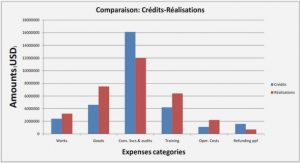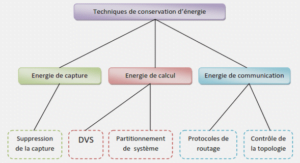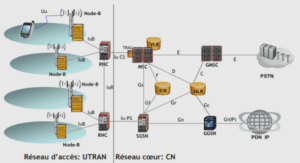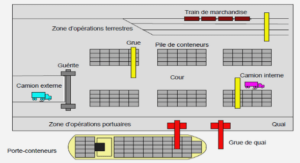Semi-solid Metal Processing
EXPERIMENTAL PROCEDURES:
The current investigation is divided into three sections. In the first section, the effect of phosphorus, strontium and processing parameters on the processability and microstructure of semi-solid 390 alloy was studied. Due to the difficulties in semi-solid rheoforming of hypereutectic 390 alloys, a new variation of the SEED rheocasting process that consists of isothermal holding and addition of solid metal in the melt was adapted to produce semisolid billets of 390 alloy. The effects of isothermal holding and the addition of solid metal on the semi-solid microstructure and the temperature gradient within the slurry were also investigated.
he second experimental section describes the methods used in two parts: 1) to investigate the solidification and microstructural evolution of Al-Si-Mg-Cu quaternary alloys containing different Mg concentrations, 2) to study effect of P and Sr on the modification of the microstructure of Al-15Si-14Mg-4Cu alloy. A study of the thermodynamic calculation of hypereutectic Al-Si-Mg-Cu alloys with different Mg contents was first carried out using the Thermo-Calc software. The results were then compared with DTA (Differential Thermal Analysis) and microstructural observations. One alloy Al-15Si-14Mg-4Cu was specifically selected from the Al-Si-Mg-Cu alloys studied, which showed a coarse dendritic primary Mg2Si phase. The effect of phosphorus and strontium additions on the primary Mg2Si particles, eutectic (Mg2Si+Si) and rc-Fë intermetallic compound in this alloy was investigated. The third section was designed to study the effect of shear rates, solid fraction, primary particle size and chemical composition on the rheological properties and microstructure of semi-solid hypereutectic Al-Si-Mg-Cu alloys. In this section four alloys were selected from the first and the second sections namely two 390 (unrefined and P refined) and two Al15Si-xMg-4Cu alloys with 10.5 and 13.5% Mg contents.
First, 24 kg of alloy was heated to the liquid state at 750 °C in a 30kg capacity refractory crucible, using an electrical resistance furnace. In each test, approximately 1.5kg of the melt was carefully poured at 660 °C into a crucible of 85 mm in diameter and 250mm in depth. Two K-type thermocouples were placed in the crucible prior to pouring, one at the center and the second near the wall of the crucible, to monitor the temperature gradient in the slurry during solidification. The tips of the thermocouples were positioned at 70mm from the bottom of the crucible. The molten metal was then swirled at 150RPM or 2.5Hz, using the SEED process. After pouring the liquid metal into the crucible, two kinds of solid metal pieces with different quantities were added to the molten metal during swirling. The first addition is pieces of 390 that have the same composition as the melt in the crucible, followed by a second addition of a 356 solid piece with the chemical composition shown in Table 3.1. The weights of the 390 and 356 solids pieces are 50g and 40g, respectively. The duration of the swirling stage depends on the mold dimension and the charge mass and for these experiments and in general it was set to 280 seconds. In the next step, the swirling motion was stopped and the melt was held isothermally for 40 seconds. Finally, the semisolid slurry was demoulded from the crucible and rapidly quenched in cold water. In other tests, phosphorus or phosphorus combined with strontium was added to the liquid metal to refine the primary Si and modify the eutectic Si of the alloys. Metallographic specimens were cut from the quenched slurry and polished using standard metallographic procedures. The microstructure was examined using optical microscopy. A CLEMEX JS 2000 optical image analyser was used to quantify the volume fraction of oc-Al and the particle size of the primary Si particles.
SEMI-SOLID HYPEREUTECTIC AL-SI-CU 390 ALLOYS USING RHEOFORMING PROCESS :
Hypereutectic 390 alloys (Al-17Si-4Cu) have generated significant interest in recent years, due to their attractive properties, such as low coefficient of thermal expansion, high wear resistance, high strength and hardness [1-3] and are widely used in the automotive and aerospace industry. Typical applications are: pistons, cylinder blocks and AC compressors [3]. However, the semi-solid processing of 390 alloys presents considerable difficulties due to the segregation of large primary silicon particles, the wide range of solidification and a large proportion of eutectic, resulting in poor processability of the semi-solid slurry [4]. Semi-solid metal (SSM) processing is a relatively new technology for near-net-shape manufacturing, which was discovered in early 1971 by Spencer [5]. The most common process routes are thixoforming, where the prefabricated billet is reheated to the semi solid state prior to casting, and rheoforming which generally starts with molten metal that is processed directly into semi-solid slurry by controlled cooling resulting in an appropriate non-dendritic structure (slurry on demand) .
It has been reported that thixoforming was successfully used to produce hypereutectic 390 semi-solid cast parts [6-8]. In this process, the partial remelting and isothermal holding promoted the separation of a-Al and Si eutectic phases and increased the amount of non- dendritic a-Al, resulting in a suitable microstructure for forming semi-solid slurry [9]. However, thixoforming is not the most economical route for semi-solid processing. Recently, a new concept of rheoforming has been explored because of its many obvious advantages. It consists of a simple process step from liquid metal to slurry with a largeµ capability to use all possible material sources (primary, secondary, selected process and recycled scrap) [10-12]. However, semi-solid processing of hypereutectic A3 90 alloy by rheoforming presents certain difficulties, such as a small processing temperature window, a high heat of fusion of silicon, a long solidification time and a segregation of primary µ silicon particles. These factors led to of the development of innovative methods to achieve an acceptable semi-solid microstructure for rheoformed hypereutectic alloys. Saga et al [4] have introduced two novel methods using diffusion solidification as a means to extract heat from the slurry. The two concepts are a) mixing hypoeutectic alloy with hypereutectic alloy at different temperatures and b) cooling of the liquid hypereutectic alloy with the addition of solid particles. To date, there are still only few publications on the rheoforming of hypereutectic Al-Si-Cu alloys.
Materials and Methods
In this section, a combination of the SEED process, isothermal holding using insulation and addition of solid alloy during swirling was introduced* as a novel method to improve the processability of semi-solid slurry. Details of the experimental method can be found in Chapter 3. First, approximately 1.5kg of alloy was heated to the liquid state at 750 °C in a 30 kg capacity refractory crucible, using an electrical resistance furnace. The molten metal was then swirled using the SEED process with the addition of solid alloy pieces. After swirling, the melt was held isothermally for ten seconds. The molten metal was then carefully pouredat 660 °C into a crucible of 85 mm in diameter and 250 mm in depth. Tw K-type thermocouples were placed in the crucible prior to pouring, one at the center and the second near the wall of the crucible, to monitor the temperature gradient in the slurry during solidification. The tips of the thermocouples were positioned at 70 mm from the bottom of the crucible. Finally, the semi-solid slurry was demoulded from the crucible. A commercial A390 alloy was used to produce the semi-solid material. Its chemical composition is listed in Table 4.1. During swirling, two different quantities of solid alloys were added to the molten metal. The first addition of A3 90 has the same composition as the melt in the crucible, followed by a second addition of A356 solid alloy with the chemical composition shown in Table 4.1. In other tests, phosphorus or phosphorus combined with strontium was added to the liquid metal to refine the primary Si and modify the eutectic Si of the alloys. After demoulding, the semi-solid slurry was rapidly quenched in water. Metallographic specimens were cut from the quenched slurry and polished using standard metallographic procedures. The microstructure was examined using optical microscopy. A CLEMEX JS2000 optical image analyser was used to quantify the volume fraction of oc-Al and the particle size of the primary Si particles.
SOLIDIFICATION AND MICROSTRUCTURE EVOLUTION OF HYPEREUTECTIC AL 15SI-XMG-4CU ALLOYS WITH HIGH MG CONTENTS:
Hypereutectic Al-Si alloys are widely used in automotive and aerospace applications due to their low coefficient of thermal expansion, good wear resistance and high hardness [1? 2, 3]. Alloys such as A390, containing 17% Si, 4.5% Cu and 0.5%Mg, are widely used in the manufacture of pistons, cylinder blocks and AC compressors [3]. All alloy composition are given in weight percent (wt %) unless otherwise stated. The presence of primary silicon in the matrix provides good wear resistance and high hardness. In this respect, hypereutectic Al-Si alloys have often been considered as in situ metals matrix composites (MMCs), with the primary Si acting as the reinforcement [4]. However, the size and the morphology of the Si phase can affect the mechanical properties of the alloy. The addition of a refiner and optimization of the cooling rate have been proposed to reduce the size of silicon particles and thus improve the mechanical properties of these alloys [5].
Thermodynamic predictions
The effect of Mg content on phase transformation and microstructure evolution during solidification of the hypereutectic Al-Si-Mg-Cu quaternary alloy system was investigated by changing the Mg level from 6.15% to 20%, and keeping the Si and Cu constant at 15% and 4%, respectively. The phase diagram was calculated using ThermoCalc software and the supporting AA12Br data bank. Figure 5.1 summarizes the various phase transformation reactions that occur in the hypereutectic Al-Si-Mg-Cu alloys during solidification over the range of Mg concentrations studied. It should be mentioned here that although the ThermoCalc data bank also has values for the addition of iron to the system, the resulting phase diagram obtained becomes quite complicated with the inclusion of Fe. Thus, in the interests of simplicity, only the quaternary Al-Si-Mg-Cu system was considered in the thermodynamic calculations. However, while the amount of Fe in the alloy is only about 0.3-0.40%, it is sufficient to account for the formation of the 7c AlgMg5FeSi6 phase which was observed in this study .
Eutectic phases
The micrographs of Figure 5.6 show the eutectic network structures observed in the four alloys studied. The black Chinese script type particles observed most clearly in (a) are the eutectic Mg2Si phase, the dark grey acicular particles correspond to the eutectic Si phase, and the lighter dendrite shaped areas represent the a-Al phase, respectively. The presence of copper and iron in these alloys also leads to the precipitation of the G-A^Cu and TEAl8Mg5FeSi6 (rc-Fe) phases, respectively.
Thermal analysis
Thermal analysis was carried out for the four alloys, where the set-up provided a cooling rate of 0.6°C/s. Figure 5.8 shows the cooling curves and the first derivatives obtained in each case. The derivatives clearly reveal 6 peaks in the case of Alloys A and B, but only 4 peaks for Alloy C and 5 peaks for Alloy D, due to the variation in the solidification sequence with the alloy composition. Based on the phase diagram obtained using ThermoCalc and the microstructural observations, the possible reactions corresponding to each individual peak were identified and are listed in Table 5.6 at the end of this section.
EFFECT OF P AND SR ON THE MICROSTRUCTURE OF HYPEREUTECTIC AL-15SI-14MG-4CU ALLOY:
Hypereutectic Al-Si-Mg-Cu alloys with high Mg contents have been attracting much attention as an important lightweight material for potential application in the automotive and aerospace industries due to their relatively low density and good wear resistance as compared with other structural metals [1,2]. These alloys can be also considered as in-situ aluminum matrix composites containing a large amount of Mg2Si particles and could be potential candidates to replace traditional hypereutectic Al-Si-Cu alloys in engine applications. These Al-Mg2Si composites show high potential as automobile brake disc material because the reinforcement Mg2Si exhibits a high melting temperature of 1085 °C, low density of 1.99 x 103 kg m »3 , high hardness of 4.5 x 109N m »2 , a low thermal expansion coefficient of 7.5 x 10″6 K »1 and a reasonably high elastic modulus of 120 GPa.
The microstructures of hypereutectic Al-Si-Mg alloys with high Mg content are essentially made up of two components, the proportions of which are governed by the alloy composition and solidification conditions. The two components are primary Mg2Si particles and the Al-Si- Mg2Si ternary eutectic. The addition of up to 4.5 % Cu to these alloys leads to the precipitation of 0-Al2Cu and Q-Al5Mg8Cu2Si6 intermetallic compounds [4]. When Mg is present together with iron, there is an increased tendency to also form the rc-Fe (Al8Mg3FeSi6)phase.
CONCLUSIONS:
The results and discussion of this thesis consist of four distinct parts. The first part (Chapter 4) deals with the feasibility of semi-solid processing of hypereutectic Al-Si-Cu 390 alloys using a novel rheoforming process. In this part, a combination of the SEED process, isothermal holding using insulation and addition of solid alloy during swirling was introduced as a novel method to improve the processability of semi-solid slurry. The second part (Chapter 5) deals with the solidification and microstructural identification of hypereutectic Al-Si-Mg containing high amount of Mg. In the third part (Chapter 6), P and Sr refinement and modification effects on the microstructure of hypereutectic Al 15Si14Mg-4Cu alloy were investigated. The fourth part (Chapter 7) deals with the effect of primary particle size and Mg addition on the rheological behaviour and microstructure of hypereutectic Al-Si-Cu and Al-Si-Mg-Cu alloys at low rates of deformation. The main conclusions drawn from each part are given below.
|
Table des matières
CHAPTER 1 INTRODUCTION
1.1 Background
1.2 Objectives
CHAPTER 2 LITERATURE REVIEW
2.1 Semi-solid Metal Processing
2.1.1 Introduction
2.1.2 Mechanisms of spheroid formation
2.1.3 Techniques of semi-solid forming
2.1.3.1 Agitation processing
2.1.3.2 Non-agitation processing
2.1.4 Advantages of semi-solid processing
2.2 Rheology of Semi-solid Metals
2.2.1 Introduction
2.2.2 Deformation behaviour of semi-solid slurries with dendritic structure
2.2.3 Deformation behaviour of semi-solid slurries with non-dendritic structure
2.2.3.1 Influence of solid fraction on apparent viscosity
2.2.3.2 Influence of shear rate on viscosity
2.2.3.3 Influence of cooling rate on viscosity
2.2.3.4 Influence of size and shape of solid particles
2.2.3.5 Thixotropic behaviour
2.2.4 Experimental techniques
2.3 Hypereutectic Al-Si-Mg-Cu alloys
2.3.1 Hypereutectic Al-Si-Mg-Cu alloys with low Mg content
2.3.2 Mechanical properties of SSM cast hypereutectic Al-Si alloy
2.3.3 Hypereutectic Al-Si-Mg-Cu alloys with high Mg content
2.3.4 Refinement and modification in hypereutectic alloys
2.3.4.1 Phosphorous refinement
2.3.4.2 Strontium Modification
References
CHAPTER 3 EXPERIMENTAL PROCEDURES
3.1 Section I: Effect of P? Sr and processing parameters on the processability and microstructure of semi-sold 390 alloy
3.2 Section II – Part 1 : investigating the solidification and microstructural evolution of Al-Si-Mg-Cu quaternary alloys containing different Mg concentrations
3.3 Section II – Part 2: Effect of P and Sr on the modification of the microstructure of Al-15Si-14Mg-4Cu alloy
3.4 Section III: Rheological properties and microstructure of semi-solid hypereutectic Al-Si-Mg-Cu alloys
3.5 Microstructure observations
3.5.1 Optical microscopy
3.5.2 Scanning electron microscopy (SEM)
References
CHAPTER 4 SEMI-SOLID HYPEREUTECTIC AL-SI-CU 390
4.1 Introduction
4.2 Materials and Methods
4.3 Results and Discussion
4.3.1 Effect of processing parameters
4.3.2 Microstructures of the rheoprocessed alloys
4.4 Summary
References
CHAPTER 5 SOLIDIFICATION AND MICROSTRUCTURE EVOLUTION OF HYPEREUTECTIC AL-15SI-XMG-4CU ALLOYS WITH HIGH MG CONTENTS
5.1 Introduction
5.2 Materials and Methods
5.3 Results and Discussion
5.3.1 Thermodynamic predictions
5.3.2 Microstructure observations
5.3.2.1 Precipitation of primary phases
5.3.2.2 Growth of primary Mg2Si phase
5.3.3 Image analysis
5.3.4 Thermal analysis
5.4 Summary
References
CHAPTER 6 EFFECT OF P AND SR ON THE MICROSTRUCTURE OF HYPEREUTECTIC AL-15SI-14MG-4CU ALLOY
6.1 Introduction..
6.2 Materials and Methods
6.3 Results and Discussion
6.3.1 Effect of P and Sr on primary Mg2Si particles
6.3.2 Effect of P and Sr on eutectic phases
6.3.3 Effect of Sr addition on the eutectic Mg2Si
6.3.4 Effect of Sr on the formation of 7E-Al8Mg3FeSi6 in Al-15Si-14Mg-4Cu alloy
6.4 Summary
References
CHAPTER 7 RHEOLOGICAL BEHAVIOUR AND MICROSTRUCTURE OF SEMI-SOLID HYPEREUTECTIC AL-SI-CU, AND AL-SI-CU-MG ALLOYS
7.1 Introduction
7.2 Materials and Methods
7.3 Results and discussion
7.3.1 Rheological behaviour and microstructure of semi-solid hypereutectic AlSi-Cu alloys
7.3.1.1 Cooling curve
7.3.1.2 Microstructure
7.3.1.3 Engineering strain
7.3.1.4 Rheological analysis
7.3.1.5 Effect of shear rate and solid fractions
7.3.1.6 Effect of P refining
7.3.2 Rheological behaviour and microstructure of semi-solid hypereutectic AlSi-Mg-Cu alloys
7.3.2.1 Microstructure
7.3.2.2 Engineering strain
7.3.2.3 Rheological behavior
7.3.3 Discussion
7.3.3.1 Comparison of the apparent viscosity of four alloys
7.3.3.2 Quantitative characterization
7.3.3.3 Comparison with literature
7.4 Summary
References
CHAPTER 8 CONCLUSIONS
![]() Télécharger le rapport complet
Télécharger le rapport complet






